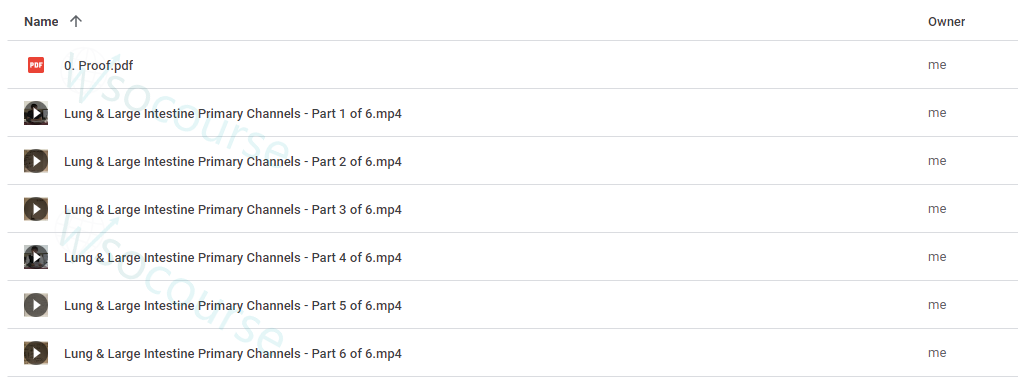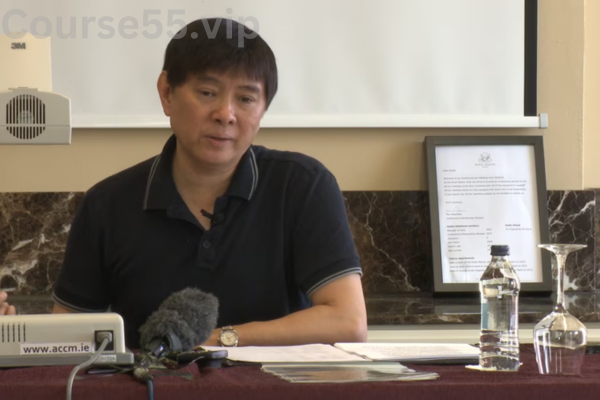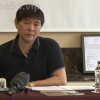-
×
 Couples on the Brink: When Is Enough Enough? By Terry Real - PESI
1 × $23.10
Couples on the Brink: When Is Enough Enough? By Terry Real - PESI
1 × $23.10 -
×
 Utah Legal and Ethical Issues for Mental Health Clinicians By Susan Lewis - PESI
1 × $23.10
Utah Legal and Ethical Issues for Mental Health Clinicians By Susan Lewis - PESI
1 × $23.10 -
×
 Spartan Renko 2.0 Workshop 2017
1 × $23.10
Spartan Renko 2.0 Workshop 2017
1 × $23.10 -
×
 New Rules for Treating Trauma: Integrating Neuroscience for Resilience, Connection and Post-Traumatic Growth By Courtney Armstrong - PESI
1 × $23.10
New Rules for Treating Trauma: Integrating Neuroscience for Resilience, Connection and Post-Traumatic Growth By Courtney Armstrong - PESI
1 × $23.10
Lung & Large Intestine Primary Channels of Classical Chinese Medicine By Jeffrey Yuen – ACCM
$170.00 Original price was: $170.00.$23.10Current price is: $23.10.
SKU: C55vip.426780ejbR5RG
Category: Download
Tags: Chinese Medicine, Jeffrey Yuen, Jeffrey Yuen - ACCM, Large Intestine Primary Channels, Lung & Large Intestine Primary Channels, of Classical Chinese Medicine
The Lung & Large Intestine Primary Channels of Classical Chinese Medicine – Digital Download!

Lung & Large Intestine Primary Channels of Classical Chinese Medicine By Jeffrey Yuen – ACCM
Overview

Lung and Large Intestine Meridians: Exploring Their Role in Traditional Chinese Medicine
Jeffrey Yuen’s seminar on the lung and large intestine meridians offers an insightful exploration of their significance in Traditional Chinese Medicine (TCM). This study not only examines their physiological functions but also delves into the profound impact they have on emotional and psychological health. Yuen begins by addressing the essential role of breathing—the vital force of life—initiated by the lung meridian and its relationship with the large intestine. According to Yuen, many health issues arise when the natural flow of qi, or life energy, is obstructed. Understanding the connection between these meridians is crucial for achieving holistic well-being, as it blends ancient Daoist philosophy with modern therapeutic practices.
The Dynamic Interrelationship Between Lung and Large Intestine
How These Meridians Collaborate to Maintain Balance
Central to Yuen’s teachings is the concept that the lung and large intestine meridians work in harmony to regulate the body’s energy flow. The lung channel plays a vital role in respiration by absorbing qi through the breath, which is foundational for sustaining life. This relationship between the lungs and large intestine is often compared to the flow of a river and its tributaries—when the river is unobstructed, the surrounding ecosystem flourishes.
This metaphor becomes even more powerful when considering how blockages within these channels can disrupt balance and lead to health issues. For example, an obstruction in the lung channel may not only affect breathing but could also disrupt the digestive system by blocking the smooth flow of qi to the large intestine.
Therapeutic Points Along the Meridians
Yuen also highlights specific acupuncture points along the lung and large intestine channels that are essential in restoring balance by unblocking the flow of qi. These points include:
-
LU1 (Zhongfu): A key point on the lung channel that helps alleviate chest congestion and emotional tension.
-
LI4 (Hegu): Located on the large intestine channel, this point is crucial for pain relief and regulating the body’s energy flow.
-
LU5 (Chize): This point connects the lung channel to the kidneys, supporting both respiratory health and fluid balance in the body.
By focusing on these acupuncture points, practitioners can help their patients address a range of physical and emotional conditions.
Daoism’s Influence on Lung and Large Intestine Channels
Daoist Philosophy and the Concept of Flow
Yuen’s seminar is deeply rooted in Daoist thought, which emphasizes the harmonious interaction between human life and nature’s forces. The lungs, responsible for bringing in air and qi, represent this harmony. They serve as more than just a physical organ; they symbolize the transformation of energy, linking the intangible to the material.
In a similar vein, the large intestine functions as a processor, refining and eliminating waste, mirroring Daoist principles of letting go and renewal. Health, according to this view, is not simply about the physical body but about the balance of energies within the body and between the body and the environment. When disturbances occur in the lung and large intestine channels, they often reflect a misalignment with the natural rhythms of life.
The Emotional Dimensions of Lung and Large Intestine Health
Yuen also explores how the lung and large intestine channels influence emotional well-being. Disturbances in these systems often result in psychological symptoms like confusion or issues with assimilation. For example, imbalances in the large intestine’s luo vessels may correlate with unresolved emotional issues related to independence and personal growth. This highlights how emotional and psychological factors can directly affect physical health, and vice versa. Recognizing these emotional dimensions enhances a practitioner’s ability to address the root causes of a patient’s condition, not just the symptoms.
Practical Approaches to Healing Using Lung and Large Intestine Meridians
Real-World Applications of TCM Techniques
Yuen shares a case study of patients suffering from chronic respiratory issues that are also tied to emotional stress. By treating the respiratory condition with acupuncture on the lung meridian and simultaneously addressing emotional concerns, healing can occur on both a physical and emotional level. This comprehensive approach is supported by modern studies, such as one in the Journal of Traditional Chinese Medicine, which showed that combining acupuncture with psychological counseling improved outcomes for patients with anxiety-related respiratory issues.
Holistic Strategies for Improving Health
For practitioners looking to incorporate this knowledge into their work, Yuen offers several strategies:
-
Breathing Practices: Encourage patients to engage in deep breathing exercises that increase lung capacity while promoting relaxation.
-
Dietary Guidance: Recommend a fiber-rich diet that supports the large intestine and digestive health.
-
Emotional Well-Being: Suggest mindfulness practices, journaling, or other forms of emotional expression to help patients release emotional blockages and restore balance.
Final Thought
Jeffrey Yuen’s teachings on the lung and large intestine meridians provide a comprehensive understanding of how the physical body, mind, and energy systems are interconnected. By blending ancient wisdom with modern therapeutic approaches, Yuen empowers practitioners to take a holistic approach to healing that considers both the body and the mind. This integrated approach invites practitioners to engage in a deeper understanding of health, where healing becomes a delicate and profound dance between the physical, emotional, and energetic realms. Ultimately, this knowledge enriches the practice of Traditional Chinese Medicine, offering powerful tools to support patient health in a balanced and harmonious way.
Frequently Asked Questions:
Business Model Innovation: We operate a group buying strategy, allowing participants to share costs and access popular courses at reduced prices. This model benefits individuals with limited financial resources, despite concerns from content creators about distribution methods.
Legal Considerations: The legality of our operations involves complex issues. Although we don’t have explicit permission from course creators to resell their content, there are no specific resale restrictions stated at the time of purchase. This ambiguity creates an opportunity for us to provide affordable educational resources.
Quality Control: We ensure that all course materials purchased are identical to those offered directly by the creators. However, it’s important to understand that we are not official providers. As such, our offerings do not include:
– Live coaching calls or sessions with the course author.
– Access to exclusive author-controlled groups or portals.
– Membership in private forums.
– Direct email support from the author or their team.
We aim to reduce the cost barrier in education by offering these courses independently, without the premium services available through official channels. We appreciate your understanding of our unique approach.
Be the first to review “Lung & Large Intestine Primary Channels of Classical Chinese Medicine By Jeffrey Yuen – ACCM” Cancel reply
You must be logged in to post a review.
















Reviews
There are no reviews yet.